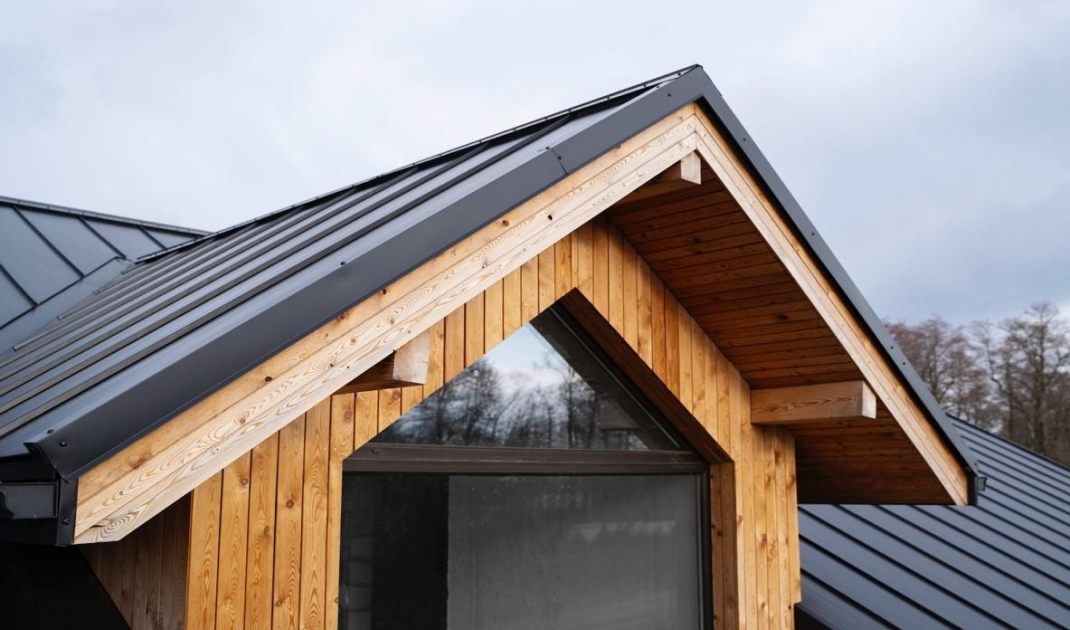Wood is naturally beautiful. However, if you want to create a facade from this raw material, it is worth taking proper care of it. The maintenance of the facade should be properly carried out, and sometimes minor renovations should be planned.
If we take proper care of wood, this material will last in good shape for many long years. If you have a wooden facade, it is necessary to devote enough time to make it pleasing to the eyes for as long as possible.
Destruction of the facade - how to prevent it?
Impregnation of a wooden facade is one of the most important factors to prevent damage. This process should be carried out periodically, because any damage to the wood is very visible. Impregnation makes the color revive, and the wood is better protected from rain and wind.
The wall of the facade, that is the most burdened by changing weather conditions, should receive the most attention. This part that will be most vulnerable to fading and damage. If there are visible cavities on the wood, it is worth proceeding with the restoration of the facade. The sooner the better, because when it is only color fading or minor defects, it will be enough to use a suitable impregnator, preferably with high water resistance.
What product to choose for wood impregnation?
It depends on the type of wood. Most often the facade is made of spruce or pine, as they are affordable and easy to work with. Of the more durable materials, larch and oak are often used, as well as beech, ash and alder. The most demanding in terms of care are varieties of exotic woods such as lapach. Among other things, they have teak oil, which increases susceptibility to pests and fungi. Another disadvantage of such wood is its high density and ease of expansion and contraction, and thus cracking of the wood. Therefore for each type of wood, you need to choose the best product.
Facade impregnation - step by step
Wood impregnation should be carried out in a specific way, so that the raw material is effectively protected from damage and pests. Remember to use the right tools and products.
Photo: iStock © author's archive
Before you start impregnation, first wash the surface from dust and dirt. Water with dish liquid or gray soap will the best for it.
-
After washing the facade, wait 3 days for the wood to dry completely.
-
If there are streaks and stains on the facade, or just very dirty areas, it is a good idea to remove them with sandpaper. However, be careful not to damage the wood too much, as this can expose raw areas and create lighter stains.
-
In addition, the substrate should be free of resinous and oily dirt. It is best to clean it with extraction gasoline or nitro thinner and dry it.
-
Impregnation is best carried out during dry and warm days.
-
Both before use and during the process itself, the impregnant should be carefully mixed. This will ensure proper color and even consistency.
-
Impregnation is best carried out when the temperature outside is between 5 and 25 degrees C. If the temperature is too low, the wood may not absorb the product. On the other hand, if the temperature is too high, it may evaporate too quickly.
-
Solvent-based product should be applied with a brush dedicated to this type of impregnation. Same with the water-based ones. If you have the option, you can also use the spray method, although it is not very economical, as much of the impregnant will disperse.
-
If the waterproofing will be applied with a brush, you will achieve a better effect when, about 1 minute after application, you will spread the product with a dry brush, directing it along the grain of the wood.
-
To achieve the best possible effect, apply 2 or 3 coats of the impregnator.
-
Wait a minimum of 24 hours between applying successive coats.
-
The coating reaches full strength after about 72 hours after completion.
-
Do not apply thick layers of the product, as this leads to cracking and peeling of the coating.
Why impregnate a wooden facade?
Impregnation of a wooden facade protects the walls from harmful moisture, UV radiation, parasites and mechanical damage. The layers of preparation should not be thick, so that the facade wouldn't get damaged qucikly.
Photo: iStock © author's archive
By impregnating a wooden facade, you will protect the wood from such factors as:
-
UV rays - they make wood to fade,
-
Fire - wood is a flammable raw material,
-
Moisture - it loosens the wood and leads to the spread of fungi,
-
Parasites and insects - impregnation strengthens the wood so that the presence of pests can be prevented or controlled.
-
Mechanical damage - the fewer cracks, the longer the wood will stay in good condition.
So if you have a wooden facade or plan to have one, be sure to protect it well against harmful external factors.
Are you building a house? Check out our tips on wood protection
Compiled by:MAŁGORZATA BUCHKOVSKA


























